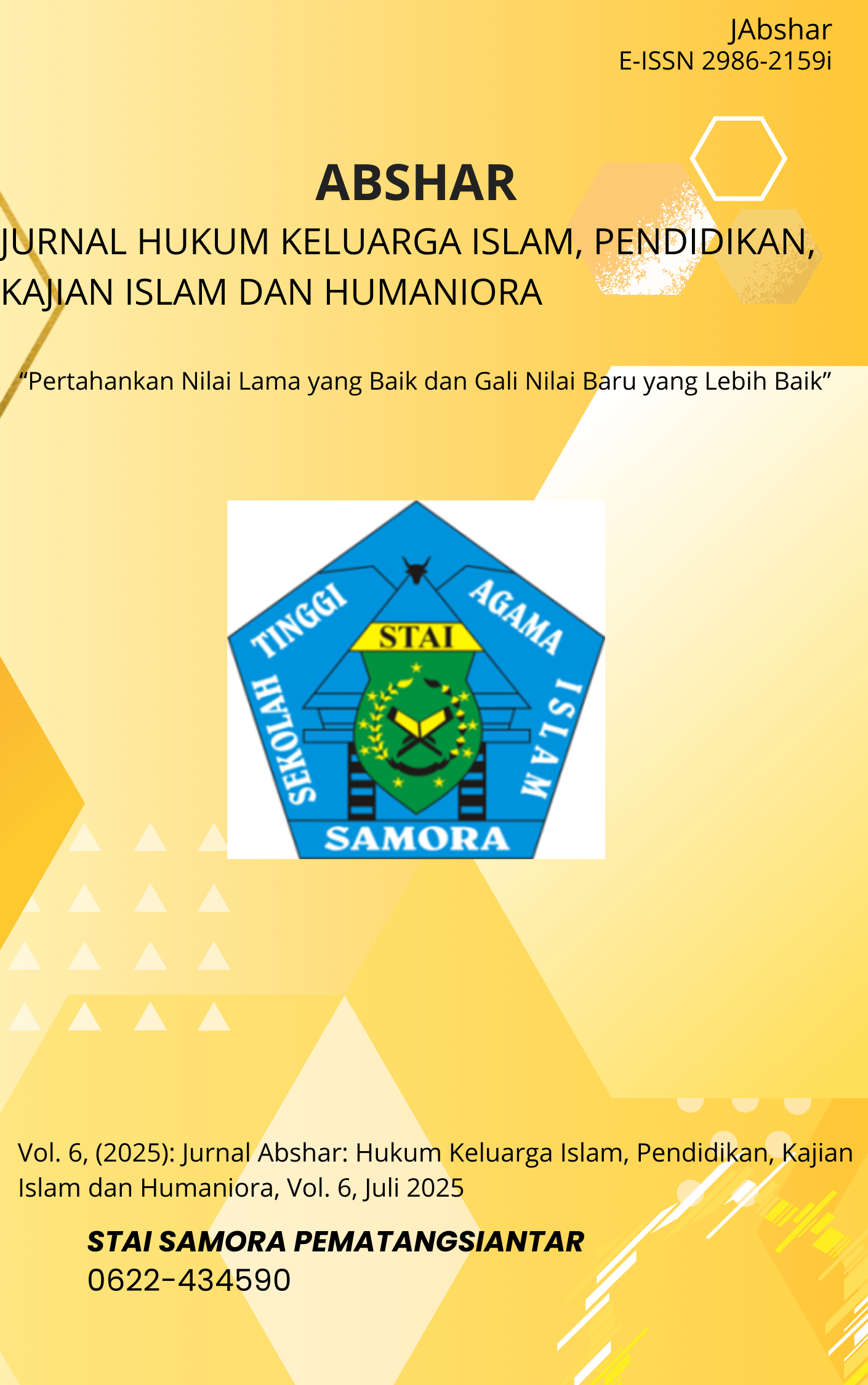The Influence of Digital Technology Curriculum on Islamic Religious Education Learning in Madrasahs
Keywords:
Technology, education, madrasahAbstract
The rapid changes in technology and information demand adjustments in various aspects of life, including in the field of education. The curriculum, as one of the main components of the education system, must be able to adapt to the times, especially in facing the digital era. This article discusses how the education curriculum needs to undergo transformation to accommodate the needs of students in the digital age. Additionally, this article also identifies the challenges faced in implementing a digital curriculum as well as the opportunities that can be leveraged to improve the quality of education. In the curriculum in madrasas there is an achievement carried out by the nation’s children, the young generation must have the skills to survive and thrive in this era. Digital literacy skills are very important, including critical and creative understanding of technology. The application of digital technology in madrasas also has an important authority to realize more advanced madrasas so that the madrasas have added value in society because they have technology to support the needs of students so that they can get to know more about technology because today’s era, namely the digital era, really needs technology to meet the criteria of today’s madrasas.
References
Dadan Sunandar, Desy Yansyah, Zaenuri, Penerapan teknologi pendidikan dalam pembelajaran PAI, Journal on Education, Volume 07, No. 02 Januari-Februari 2025, hal. 12761
Noor, A. (2019). Problematika pembelajaran pendidikan agama Islam di era digital. In Prosiding Seminar Nasional Prodi PAI UMP.
Zaimatus S, Riska P, iplimikasi literasi digital dalam pembelajaran PAI di madrasah, vol 1,no 7,januari 2025,hal 42
PW, P. W. (2022). Peran Teknologi Pendidikan Dalam Pendidikan Islam. Jurnal Dirosah Islamiyah, 4(2), 174–184. https://doi.org/10.47467/jdi.v4i2.692
P. Oktavia, k, khotimah, PENGEMBANGAN METODE PEMBELAJARAN PAI DI ERA DIGITAL, UIN Lampung, An Najah, vol 02,no.05, sep 2023,hal 69-70
Selamet Awan Setiawan, M. Pd, tantangan guru PAI mengimplentasikan kurikulum merdeka dalam pembelajaran PAI, JIMPII, 19 april 2024,journal inivasi, hal 59
Syfa fauziah, padiah achmad, Pengaruh Pengunaan Media Digital Dalam Pembelajaran PAI Terhadap Motivaai Belajar Siswa, AL-FIKAR, vol 8,No.1(2025), hal 678-679Ardita, C. R., Salsabila, U. H., Syarofah, A., Pahlevie, M. S., & Risam, M. R. N. (2021). Peran Teknologi Pendidikan pada Pembelajaran PAI di Masa Pandemi Covid-19. Lisyabab : Jurnal Studi Islam Dan Sosial, 2(2),
Angus, S. D., & Watson, J. (2009). Does regular online testing enhance student learning in the numerical Sciences? Robust evidence from a large data set. British Journal of Educational Technology, 40(2), 255–
Stone, A. (2012). What does ‘e-portfolio’mean in the vocational sector? International Journal of E-Assessment, 2
Ardiansyah, R., & Diella, D. (2018). Implementasi E-learning Berbasis Assessment For Learning Untuk
Meningkatkan Performa Belajar Mahasiswa. BIOSFER: Jurnal Biologi Dan Pendidikan Biologi, 3(2), 6–13.
Downloads
Published
How to Cite
Issue
Section
License
Copyright (c) 2025 Luthfi, Ahmad Mansur

This work is licensed under a Creative Commons Attribution-NonCommercial 4.0 International License.

This work is licensed under a Creative Commons Attribution 4.0 International License.
Authors who publish with this journal agree to the following terms:
- Authors retain copyright and grant the journal right of first publication with the work simultaneously licensed under Creative Commons Attribution 4.0 International License that allows others to share the work with an acknowledgement of the work's authorship and initial publication in this journal.
- Authors are able to enter into separate, additional contractual arrangements for the non-exclusive distribution of the journal's published version of the work (e.g., post it to an institutional repository or publish it in a book), with an acknowledgement of its initial publication in this journal.
- Authors are permitted and encouraged to post their work online (e.g., in institutional repositories or on their website) prior to and during the submission process, as it can lead to productive exchanges, as well as earlier and greater citation of published work (Refer to The Effect of Open Access).









